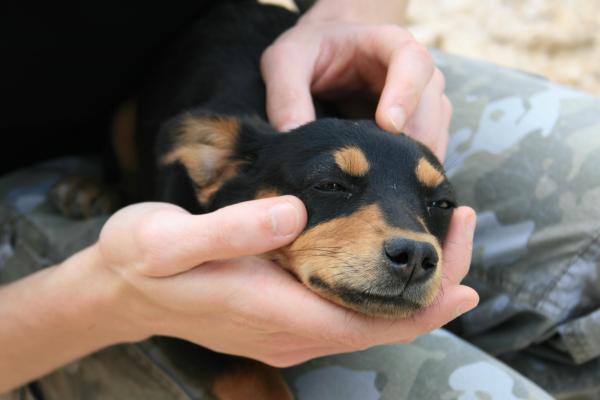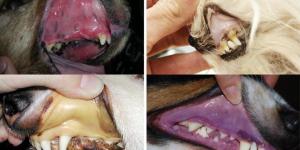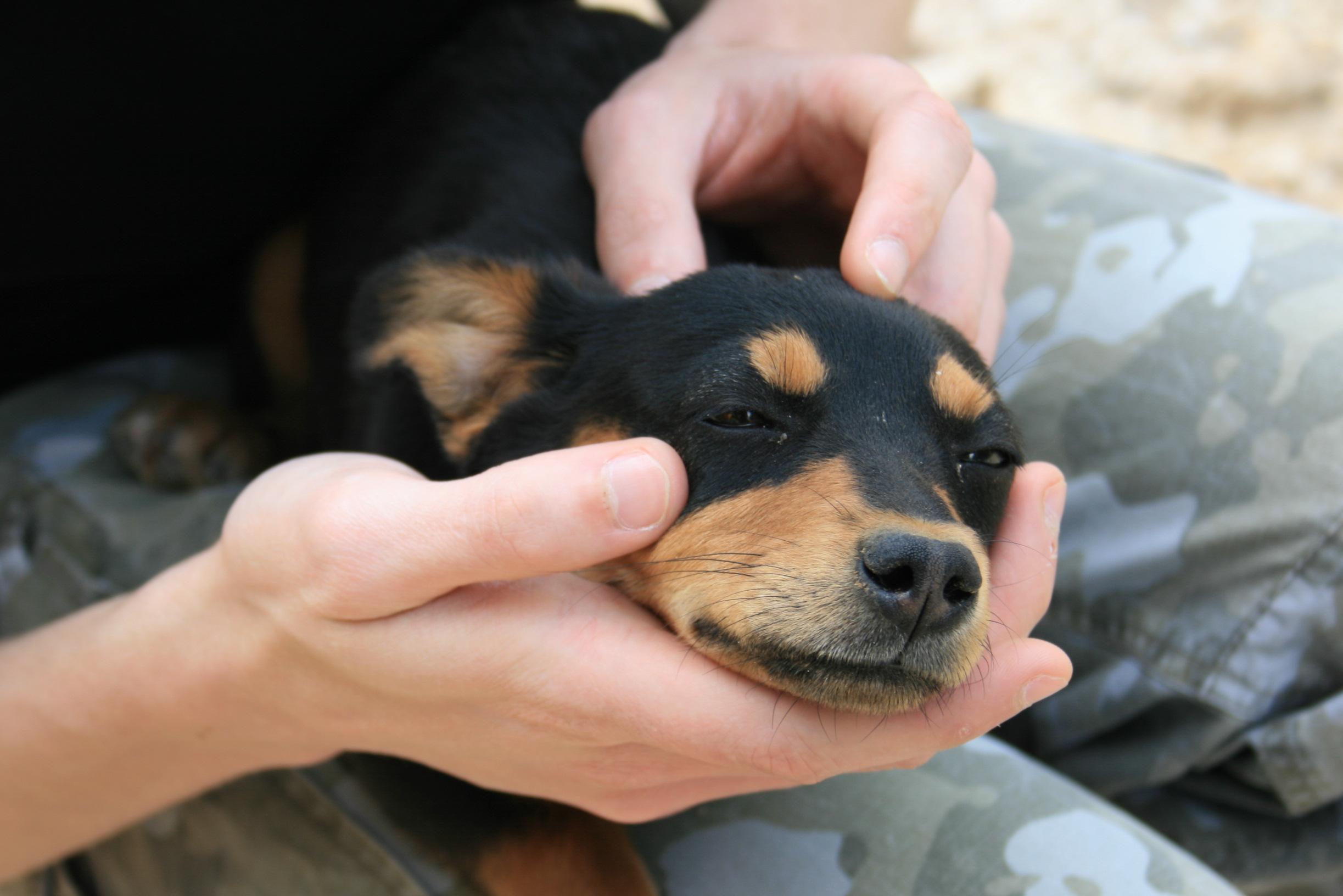Dog Poisoning



See files for Dogs
If you have dogs or you are thinking of getting one as an addition to the family they you will be interested in this AnimalWised article where we will address a very important issue that we must be aware of to ensure the health of our dog and even save its life in the case of accident. We are talking about poisoning, as it is easier than you may initially think for our dog comes into contact with a substance that is toxic for it.
We know that dogs in general are very curious, careless and some even clumsy, especially puppies. So we must be careful, watch them whenever we can and be informed about dog poisoning, its symptoms and first aid. We hope you never need to act out what we are going to explain, but if so, remain calm to stay effective and read carefully.
Main causes of poisoning in dogs and tips to prevent this happening
We can avoid situations where our faithful friend is injured or accidentally poisoned. We will do this by keeping potentially dangerous elements safely out of its reach on high shelves in cabinets or in locked cupboards, preventing it from eating things on the street, not letting it drink pool water or bathe in it when it has been freshly treated with products like chlorine, if we use insecticides in the garden we will prevent our dog from licking these or coming into contact with the area until the products used have dried, among other preventive measures.
There are three ways in which a dog may be poisoned:
- Contact with the skin: When venom is in contact with the animal's skin and this is absorbed and inserted into the body.
- Breathing: When the toxic substance is inhaled by the dog and enters its body through absorption into the breathing passages and lungs.
- Orally: When our dog ingests something inappropriate and this causes poisoning.
Next we present the common poisons and toxic substances, in other words the most common causes of poisoning:
- Human food (chocolate, chewing gum with xylitol, avocado, grapes, macadamia nuts, onions, garlic, etc.)
- Medicines for humans (paracetamol, cough syrup, etc.)
- Insecticides, pesticides, poisons, herbicides and fertilizers (carbamate, amitraz, pyrethrin, arsenic, warfarin, strychnine, etc.)
- Paints and car batteries (lead)
- Poisonous fungi (different types of mushrooms)
- Insects and other poisonous animals (Spanish flies, snakes, toads)
- Poisonous Plants (cyanide)
- Cleaning products (solvents, chlorine, softeners, detergents, etc.)
- Anti-parasitics (some products sprayed on our pet and its environment to remove external parasites)
- Alcohol (in drinks or other formats)
- Tobacco (nicotine)
These products and substances, which are found in objects, animals and varied plants, are toxic chemicals and enzymes for dogs and other pets as their bodies can not metabolize them.

General dog poisoning symptoms
In case of poisoning the symptoms may appear quickly or take hours, they are very varied and they depend on the substance that has caused the poisoning and its quantity. Some of the most common symptoms are as follows:
- Vomiting and diarrhea, even with blood
- Intense pain with groans (whining)
- Depression and weakness
- Coughing and sneezing
- Dilated pupils
- Tremors, involuntary muscle spasms and convulsions
- Nervousness
- Dizziness
- Muscle stiffness
- Disorientation
- Paralysis of any affected area or whole body
- Severe drowsiness or lethargy
- Sudden excitability and hyperactivity
- Collapse and unconsciousness
- Weakness and fever
- Excessive salivation
- Bleeding from various orifices
- Respiratory and heart problems
- Difficulty in limb coordination due to neurological problems (ataxia)
- Apathy
- Darkening of mucous membranes in some cases
- Excessive thirst (polydipsia)
- Very frequent urination (polyuria)
- Gastric irritation
- Swelling, irritation, rash and skin marks
- Loss of appetite and anorexia
As soon as we detect some of these symptoms we should act quickly and call an emergency service veterinary.

Dog poisoning first aid
When poisoning occurs our pets must quickly visit or call our vet or use an emergency veterinary service. But did you know that there are measures of first aid that we can perform ourselves as we wait for the vet to arrive? However, we should only do these if the specialist does not contradict us and depending on the source of the poisoning. This quick action may save our faithful companion's life.
If possible with the help of someone, as we detect the symptoms described above, we should call the vet and report all the signs that we see including the animal's condition, symptoms and what poison is possibly causing the problem, its compounds, packaging, labels and anything else. In addition, we must address the symptoms of our poisoned dog according to the source of poisoning and other evidence. We must stay calm and act quickly remembering that in these cases time is vital.
These are the most common steps to follow when faced with pet poisoning:
- Should our dog be very weak, nearly passing out, unconscious or when we are certain that the intoxication his through inhalation, the first thing to do is get the animal to a open, airy and bright area. Here we can better observe symptoms and provide our dog with fresh air. To lift it we must be careful and do this in a way where we firmly pick up the whole body. If you do not have an outdoor area then an area like the bathroom or kitchen will usually be well lit and have water to hand, which it will most likely need.
- What is more, we must carefully remove any poison in sight to prevent other pets or people nearby also being poisoned. We will have to save a sample to serve the veterinarian in his or her diagnosis.
- While we do this someone else can contact the vet. If we are alone we will do this straight after stabilizing the dog, removing the localized poison and saving a sample. The specialist will help us to stay calm and focus. The sooner you call the vet the higher the chances of survival for the dog.
- If we can identify the poison we must give the maximum information possible to the vet such as the name of the product, its active ingredient, its strength, how much the animal may have eaten and the time that may have passed since it did. The more indications, depending on the type of poison that has caused the poisoning, the more chances of survival.
- The veterinarian will tell us which first aid we can give and which not, according to the identified poison. For example, one of the first actions we must do in cases of poisoning is induce vomiting, but we must know that we will never do this if the dog is unconscious or has fainted or if it has been poisoned by a corrosive. If the dog is unconscious and we make it vomit we may cause it to breath in its vomit, entering its respiratory system and causing pneumonia. Moreover, in cases of poisoning by a corrosive all we will accomplish if we make it throw up is a a second caustic burn in the digestive tract, pharynx and mouth of the animal, worsening its situation. If the poison has been ingested for two or more hours it will be quite useless to provoke vomiting as its digestion will be very advanced or terminated. Therefore we will only induce vomiting if the animal is not unconscious, if we know for sure that the substance is not a corrosive such as an acid or alkali and if its ingestion took place less than two hours ago.
- We must not give the dog water, food, milk, oil or any other home remedy until we know for sure what poison was ingested and how to proceed, so it is best to wait for our vet's indications whilst we provide him or her with as much information as possible. This is due to the fact that, if we do not know exactly what we are facing, these home remedies may produce an opposite effect to that that we hoped for and instead worsen the condition of our faithful companion.
- If it is decided that due to the circumstances we do need to make our poisoned animals vomit then we must follow some proper guidelines for inducing vomiting and so prevent any damage during the process. These guidelines are covered in another article called 'How to treat a poisoned dog'.
- Once the vomit has been induced we will have helped expel some of the poison from the dog's body, but still some of the poison will have been absorbed by the intestine and we must try to reduce the advance of the poisoning. This can be accomplished with activated carbon, which is discussed in the article mentioned in the previous point and where we also explain how to administer it.
- If contamination has not occurred by ingestion but was instead topical or on the skin, poisoning from dust or an oily substance that has adhered to the fur of our dog, we must shake off the dust with intense brushing and then bath the animal with warm water using a good soap to remove any oily substances. If with this we did not remove the toxic coat we can cut the area of fur as it is better to remove it than later regret that our dog gets worse or is poisoned again.
- If the poisoning occurs through contact with mucous membranes such as skin and eyes we will bath these with water to remove to the greatest degree possible the harmful substance from the area.
- If the victim of poisoning is awake and less groggy, and the vet does not tell us otherwise, it will be good to give them fresh drinking water as many of the poisons that dogs may accidentally ingest affect the kidneys and liver. Giving them a little water will reduce the impact on these organs. If they do not drink themselves we can administer fluids slowly with a syringe to the mouth.

Do you have any questions at all? Don't hesitate to leave a comment below!
This article is purely informative. AnimalWised does not have the authority to prescribe any veterinary treatment or create a diagnosis. We invite you to take your pet to the veterinarian if they are suffering from any condition or pain.
If you want to read similar articles to Dog Poisoning, we recommend you visit our First aid category.








